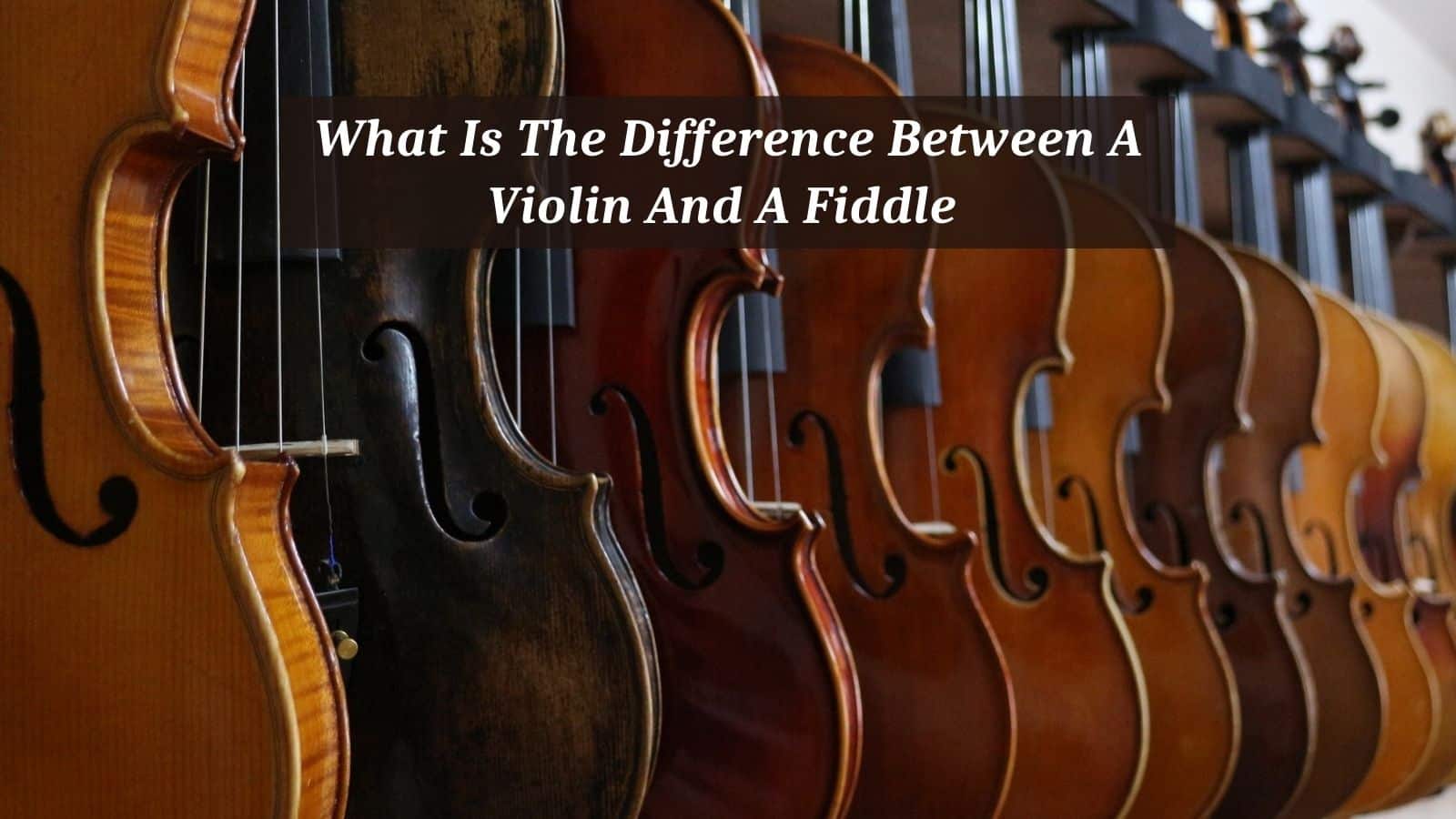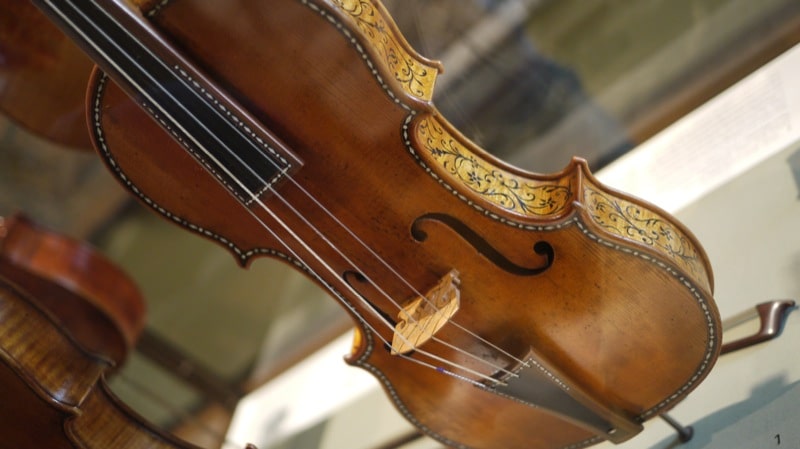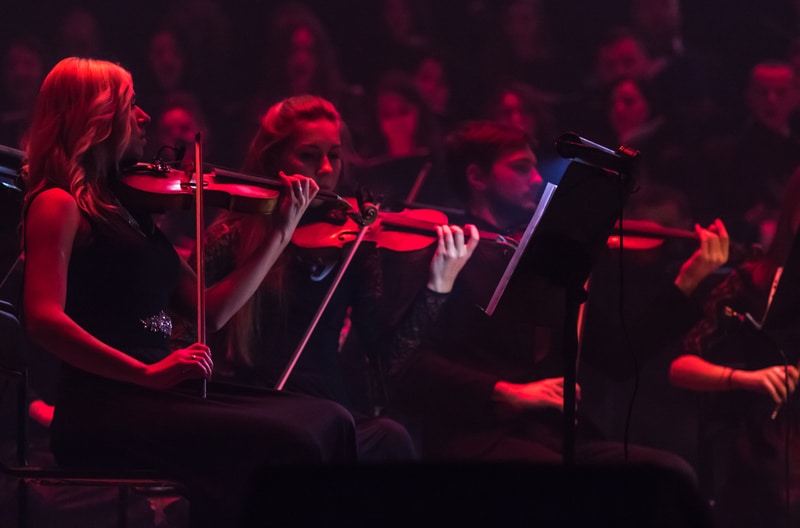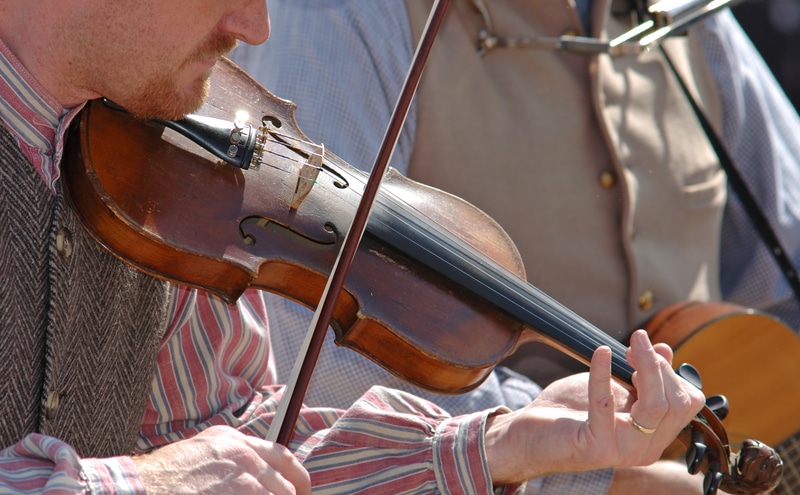
Many people wonder if the fiddle and the violin are the same instrument. Indeed, they have the exact same shape and are played with a bow.
Therefore, it is not wrong to use their names interchangeably in informal settings or to assume that they are the same instruments.
However, each of them may have distinctive features and a unique historical background, resulting in different styles of music.
Considering the classical music tradition, the violin is the most correct term to refer to the instrument when used in an orchestra, whereas fiddle refers to the folk instrument, normally used in open spaces or less quiet venues.
Etimology
The word ‘violin’ comes from the Italian ‘violino’, which is the diminutive form of the word ‘viola’, derived from the Latin word ‘vitula’, a stringed instrument.
Vitula was considered the goddess of joy, and the name of the instrument is probably related to her. The word ‘fiddle’ evolved from the Old German ‘fidula’. By resemblance, ‘vitula’ and ‘fidula’ probably have the same origin.
But what makes a violin different from a fiddle?
The modern violin, or fiddle, as we know it today, can be traced back to the 1500s. It was designed by violin makers from the Amati and Stradivari families in the north of Italy and named ‘violino’.
The successful design and outstanding quality of these instruments made them popular, to the point that other instrument makers decided to copy them.
The violin soon achieved a noble status in palaces and royal courts in Europe. Many European kings hired composers and performers to entertain the high society with classical music played by the ‘violino’, along with other instruments of the family such as the viola and the cello.
With their increasing popularity in the following centuries, the violins started being mass produced.
Many similar instruments predated the violin, such as the Persian ‘rebab’, the French ‘vielle’, or even the Asian ‘erhu’. These instruments were more simple, sometimes with just one or two strings, and used either in popular settings or in folk songs.
They never reached the same noble status as the ‘violin’, and could be used for the performances of folk songs and for entertaining all classes of people.
What Is The Difference Between A Violin And A Fiddle
The craftsmanship of the violin reflected its noble status. The corners, the scroll, the f-holes—all these elements demanded a very refined work by an experienced maker.
With the high demand for these instruments all over Europe, they soon started to replace their more simple counterparts.
Many amateur makers attempted to make homemade violins, which lacked the refinement of a professionally made violin.
However, with the advent of technology and the exchange of information, the violin, as made by the Amati and Stradivari families, became the standard, and we can say that both the fiddle and the violin became the same instrument.
We can still point out some small differences between the modern violin, used mostly for classical music, and the fiddle, used for more popular styles such as Irish music or bluegrass. These differences are not the norm but can be found very frequently:
Way of holding the instrument
Because fiddlers do not use the whole extension of the instrument, they hold the instrument in a slightly different way than classical musicians.
They can hold the instrument with the palms of their hands, whereas classical musicians hold it with the help of their heads, never touching the palm of the hand to the neck of the instrument.
Optimization for the folk style
A distinctive feature that is unique in fiddles that have been adapted for folk music is the flattened bridge, which allows the player to play double stops (two notes at the same time) more easily.
Double-stops are very common in Irish and bluegrass styles but not so frequent in orchestral music, for example.
One advantage of being able to play more notes at the same time is that the player can play melody and accompaniment at the same time, which is useful if no other instrument is available for accompaniment.
Strings
Another difference between fiddles and violins is the type of strings used. Classical violinists prefer strings with a more sweet tone, rich in harmonics yet with great projection, suitable for great theaters, whereas folk musicians prefer a more metallic tone, which helps with projection in open spaces.
The choice of brand of strings definitely reflects the differences between both styles.
Venues
Violinists often perform in theaters and halls with an architecture especially designed for the performances of orchestras and chamber groups.
Classical concerts with a more refined repertoire, which usually require a silent audience, for example, rarely happen in venues that could be significantly noisy.
Fiddlers, in turn, do perform in open spaces and more noisy venues such as pubs.
It is not rare to find fiddle camps, which are meetings organized regularly so that musicians and appreciators of folk music can gather, learn, and enjoy the performances.
The performances can happen in a variety of venues or even in open spaces, reflecting the popular origin of the instrument.
Memorization
Fiddlers learn music by ear, rarely by reading sheet music. This tradition passes from generation to generation and is almost standard in all popular styles. Memorization of this type of repertoire is somewhat easy because the tunes are short and stick in the ear.
It is the type of music that can easily serve the purpose of entertainment. Classical musicians, in turn, usually need to read from a sheet of music due to the level of complexity and length of the more elaborate pieces.
Conclusion
Although the fiddle and the violin are technically the same instrument, they have different backgrounds and serve different music styles. The violin is more tied to classical music due to its historical background, whereas the fiddle is usually related to folk music.
Some small adjustments can be made in order to optimize the violin for the folk style, such as changes in the bridge and a different choice of strings.
Because the violin is being modified to perform in the folk style, it can still be called a violin. However, the opposite is not true, as the name has already been standardized after centuries of tradition.



